2023 Subaru Outback Review: Updating the SUV Anomaly

FAST FACTS
| Engine: | 2.5L I4 / 2.5L I4 Turbo |
| Output: | 182/260 hp, 176/277 lb-ft |
| Transmission: | CVT, AWD |
| US fuel economy (MPG city/hwy): | 21-26 / 26-32 |
| CAN fuel economy (L/100KM city/hwy): | 9.2-11.0 / 7.3-9.0 |
| Starting Price (USD): | $29,620 (inc. dest.) |
| Touring XT Price (USD): | $43,520 (inc. dest.) |
| Starting Price (CAD): | $34,690 (inc. dest.) |
| Premier XT Price (CAD): | $48,390 (inc. dest.) |
Since 1996, Subaru’s Outback has perennially been one of the brand’s most important models. Consistently pulling in healthy sales figures globally, it defines much of what Subaru is all about.
It’s unsurprising, then, that the Fuji-based company has cautiously evolved the Outback over the decades. The brand never deviating from the proven formula of a slightly lifted, mid-sized wagon with protective body cladding (brief foray with the Outback sedan, notwithstanding).
Now in its sixth generation, the Outback receives a mid-cycle refresh for 2023 and while it’ll take a keen eye to spot the differences, the changes collectively make a great car better.
SEE ALSO: Subaru Outback vs Subaru Forester ComparisonWith the exception of a beefed-up brake booster for the automated braking systems, the Outback heads into 2023 without any mechanical updates. The pair of “boxer” four-cylinder engines soldier on unchanged with a naturally-aspirated 2.5 L producing 182 hp and 176 lb-ft of torque, and the zestier 2.4 L turbocharged variant delivering 260 hp and 277 lb-ft of torque. In all Outbacks, power is distributed via a CVT transmission to all four wheels with Subaru’s celebrated full-time, symmetrical all-wheel-drive system.
Modest Styling Updates
Still unmistakably an Outback, the most noticeable visual updates apply to the front end that sees a larger grille opening, sharper headlight design, and of course, more black plastic cladding that now reaches up to the bottom of the headlights. It’s a less conservative styling approach than before, but still subtle enough to remain inoffensive to most buyers.
The cladding around the wheel openings also expands in the interest of better protecting the fenders presumably for when owners crawl through the woods or blast through the desert in their Subarus. The rear bumper skin is also slightly re-shaped and the interior design remains mostly unchanged. The exterior changes apply to all models except the Wilderness trim introduced last year.
Subaru has added a new Onyx variant taking the same approach applied to the Ascent. It replaces the chrome from the grille, window surrounds and badging with black trim. Intended as somewhat of a Wildernes-Lite, the Onyx also gets the washable vinyl interior. As well, there is the dual-function version of Subaru’s X-MODE drive system that includes the Snow/Dirt mode found on other Outback trims and a Deep Snow/Mud version for more wheelspin to help get out of sticky situations. Despite wearing the same modest street-oriented tires, the drive route included a forest path with a heavily-rutted, boggy section filled with pudding-like muck, and the Onyx simply drove through it with ease.
In the US, the Outback Onyx is available with either the normally-aspirated, or turbocharged engines, but Canadian-market units aren’t available with the turbo.
Fresh Tech
The real changes occur to the Outback’s technology. Entry-level models carry on with a dual 7-inch touch screen system, while all other models get the latest rendition of Subaru’s 11.6-inch infotainment system. The display is reconfigured to include a few bars of virtual buttons at the bottom of the screen allowing for easily accessible climate and frequently-used controls like those for the heated seats. This replaces tapping through a series of menus.
In all, Subaru claims more than 100 improvements have been made to the infotainment system, many prompted by owner feedback during the past few years. Both map updates and firmware updates are now over-the-air, rather than requiring a dealer visit.
Wireless charging supplements the addition of front and rear USB-C charge points (USB-A are also still present), but for all Outbacks with the larger screen, CarPlay connectivity is now wireless-only (Android Auto can be done with a cable or without). During our test drive, the system proved responsive to inputs and managed multiple functions (music streaming, text messaging and Google maps) without freezing up or bogging down. Users with older-generation phones may wish for hard-wired connectivity though.
What3wrods and Starlink
Models with baked-in navigation get the what3words app. It enables the user to plug in a 3-word address to navigate to a specific location, even without a traditional street address. The system will then provide directions to get there. The app works by dividing the planet into 3 metre square segments and applying a unique 3-word code for each, making it a useful tool for adventurers travelling off the beaten path.
SEE ALSO: Subaru Ascent vs Subaru Outback: Which Crossover Is Right for You?Subaru has also added more functionality to its own Starlink app that enables owners to do more from their phones. These features include controlling the ventilating seats as well as unlocking the lift-gate.
Improved Safety
The added technology allows for improvements to the Outback’s safety. Already a category leader with more than a dozen consecutive years of IIHS Top Pick ratings, the Outback receives EyeSight Version 4. It has improved stereoscopic cameras designed to work in a broader range of conditions. The top Touring trim (Premier XT in Canada) gets an additional mono-lens wide-angle camera to supplement the dual system. It provides an even greater field of view to help spot pedestrians, cyclists or other vehicles sooner. Combined with the electric brake booster, pre-collision braking is improved, as are the lane centering and adaptive cruise control responsiveness.
While we thankfully had no need to test the systems in an emergency scenario, the adaptive cruise control and lane centering operated smoothly during the highway portion of the test drive.
Top models also receive a smart review mirror that can display a camera image. It’s a system that can be useful when tall passengers or bulky cargo obstruct rear visibility. But they can be tricky to get used to while driving, requiring the eyes to focus on a screen rather than a reflection.
On the Road
The driving test loop took us around the picturesque Muskoka, Ontario region during the peak of autumn colors. With plenty of outdoor activities and heavy winters in the area, Subaru products are as prevalent here as they are in the Northern US, and for good reason. Beyond their all-weather-conquering capabilities, the Outback offers ample space for five passengers and a wholly usable cargo hold. The split folding rear seats fold flat with the pull of simple levers. The width and length of the cargo area is unmatched by compact SUVs, and even some mid-sizers.
SEE ALSO: Subaru Crosstrek vs Subaru Outback: Which Crossover is Right For You?It didn’t take long for the 2023 Subaru Outback to remind us why it’s such a popular machine. Although the body rolls significantly around any moderate curve, the car takes a set and clings aggressively to the road. It inspires confidence, even when driving in a manner far more spirited than most owners are likely to do. The steering is very light and offers little in the way of road feel, but it’s reasonably quick and there’s very little numbness on centre. Again, making it surprisingly competent and decently fun machine to hustle around.
Off the Road
The roly-poly nature comes from the tippy-toe ride height, but also the compliance baked into the suspension. It helps the Outback maintain its composure, even when the pavement ends. There’s lots of travel in the suspension, keeping the tires connected to terra firma over uneven surfaces. It also means that the Outback handily consumes potholes, train tracks, and all sorts of obstacles that stymie lesser utes. As a bonus, it does so with remarkably little impact reaching the cabin.
The basic 2.5 L engine has adequate thrust to get around, but it’s far from exhilarating even without a load of passengers and their luggage. Meanwhile the boosted 2.4 L is notably quicker and better-suited at hauling around the Outback’s bulk.
2023 Subaru Outback: The Verdict
Subaru has slowly been evolving and improving the Outback to fill a niche as the anti-SUV. Its wagon style offers practical benefits ranging from a better ride and handling than most competitive SUVs, to a cargo hold with usable proportions. The incremental, tech-based updates to the 2023 Outback should help keep the Subaru popular amongst fiercely competitive peers in the segment, while current owners and fans of the model are sure to continue their appreciation for the Outback.
Pricing rises roughly $1,200 for base models now starting at $28,395, with the Onyx Edition checking in at $33,495 and Onyx Edition XT at $38,595. Destinations charges are additional. In Canada, the entry level Convenience trim is $32,695, and the Onyx $38,695.
The 2023 Subaru Outback is available to order now at dealerships.
FAQs
Is there a new Outback coming out?
The 2023 Subaru Outback is not all-new, but does receive an update this year all around.
Can I order a 2023 Subaru Outback?
Yes, the new Outback is currently available at dealerships in Canada and the United States.
Is the Forester bigger than the Outback?
No, the Subaru Forester is a smaller overall vehicle than the Outback. The Forester is more SUV like though, with a taller profile.
Become an AutoGuide insider. Get the latest from the automotive world first by subscribing to our newsletter here.
LOVE IT
- Ride Comfort
- Turbo Engine
- Off Road Ability
LEAVE IT
- Body Roll
- Base Engine
- No Big Screen on Base Models

If there’s anything better than a good road trip through the desert, Jeff probably hasn’t heard of it. He’s got a propensity for buying less-than-perfect sports cars like a well-worn Boxster, an M Roadster and an MR2, but has applied a lifetime of passion to more than a dozen years of automotive and motorcycle reviews. He’s even collected several awards in the process including recognition for Best Automotive Review and Best Published Photography from the Automobile Journalists of Canada in 2023.
More by Jeff Wilson





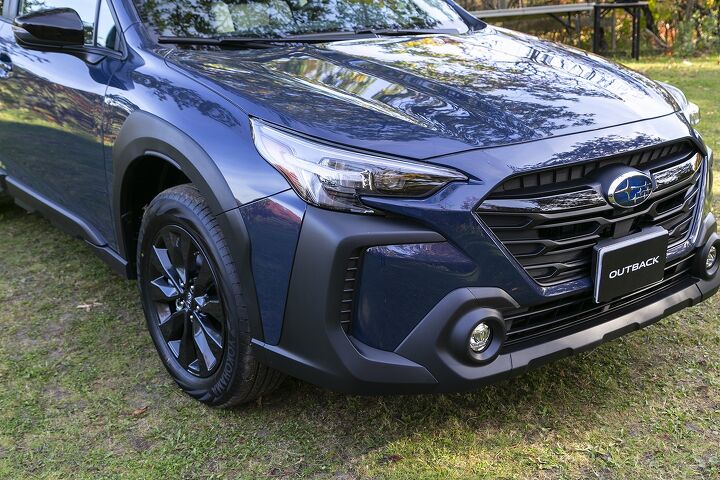








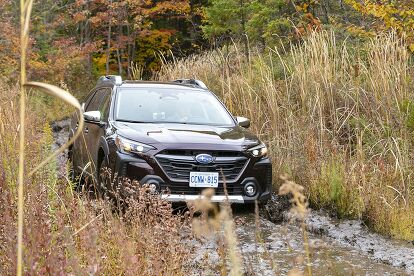



















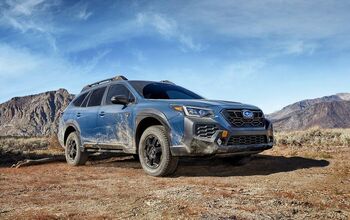
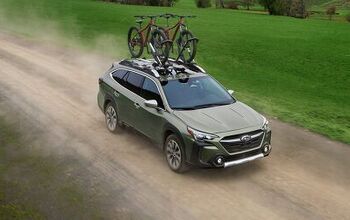
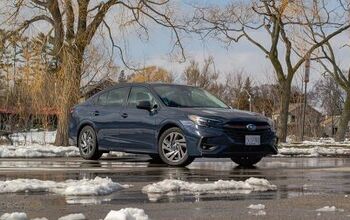

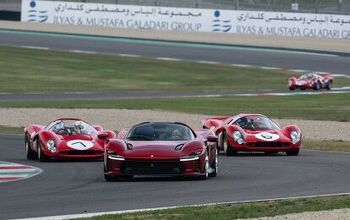

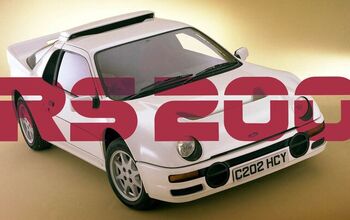




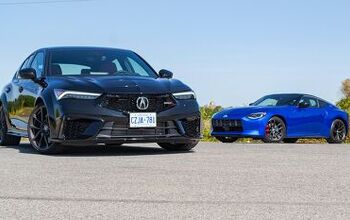


Comments
Join the conversation